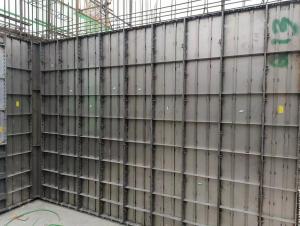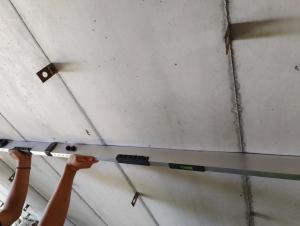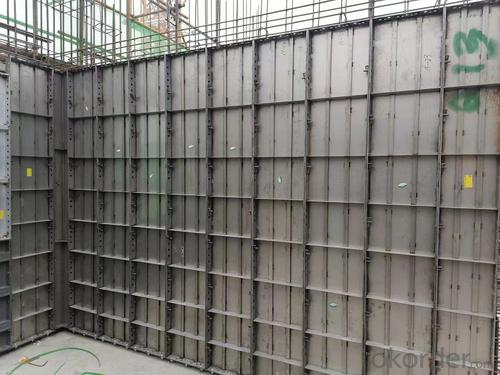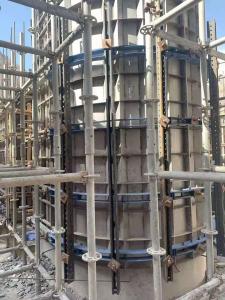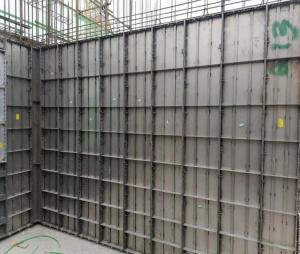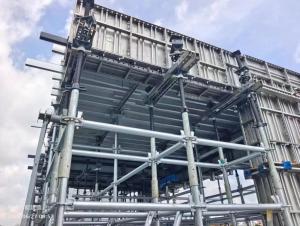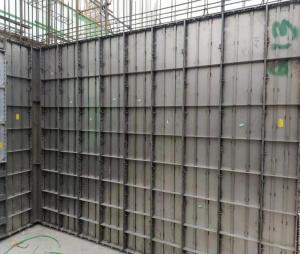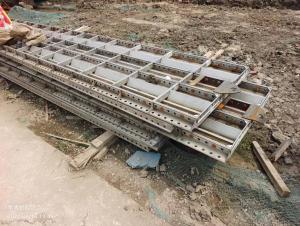Best qaulity of construction formwork,concrete column formwork, Stainless Steel Formwork
- Loading Port:
- Shanghai
- Payment Terms:
- TT or LC
- Min Order Qty:
- 1 set
- Supply Capability:
- 1000000 set/month
OKorder Service Pledge
OKorder Financial Service
You Might Also Like
Stainless steel formwork
Replaceable size aluminum formwork :400X1200mm , 400X1500mm
FORMWORK FOR INFRASTRUCTURE PROJECTS
Varying from bridge piers to hydraulic climbing for tank and silos, can help you find the best solution, no matter how difficult the shape of the concrete structure are.
Advantages:
1 Stainless steel formwork, 100% follow the design of aluminum alloy formwork system, it is interchangeable, compatible and can be used together with aluminum formwork at the same time .
2It is made of high-strength stainless steel strip by rolling and laser welding. It has good corrosion resistance and high density,is not easy to rust and has no fire hazard.
3Long service life, many turnover times, high recycling value
The number of turnovers is large, especially the characteristics of no dust, no need to brush or less mold release agent, and the characteristics of low renovation costs will bring unlimited optimistic prospects to it.

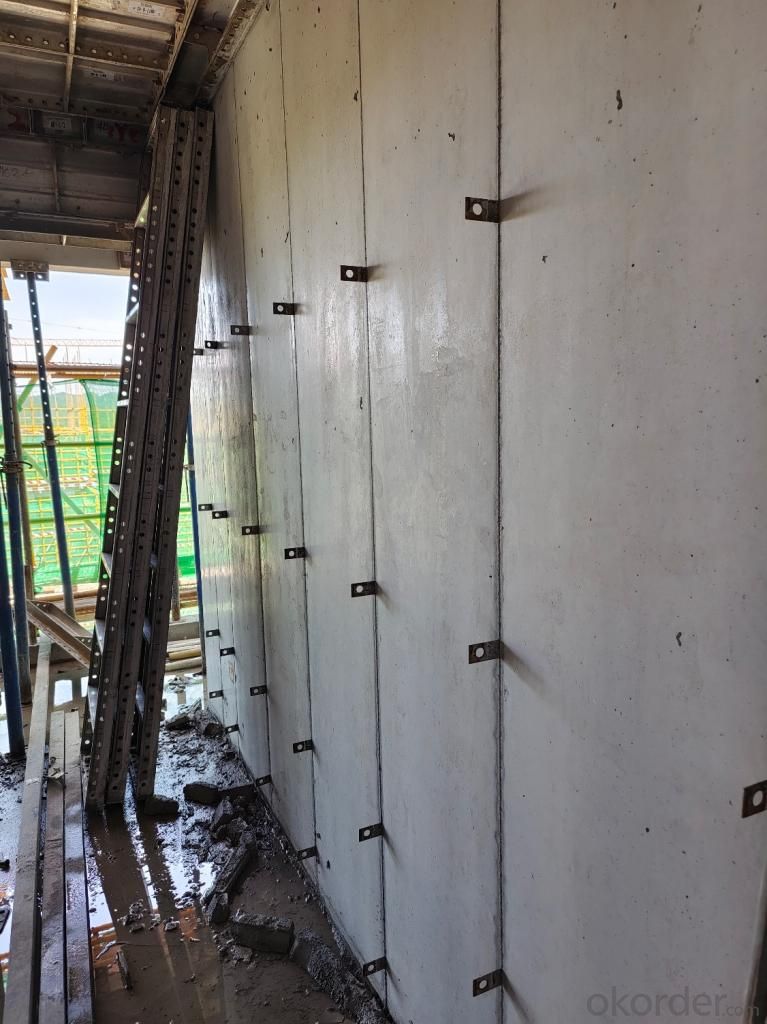
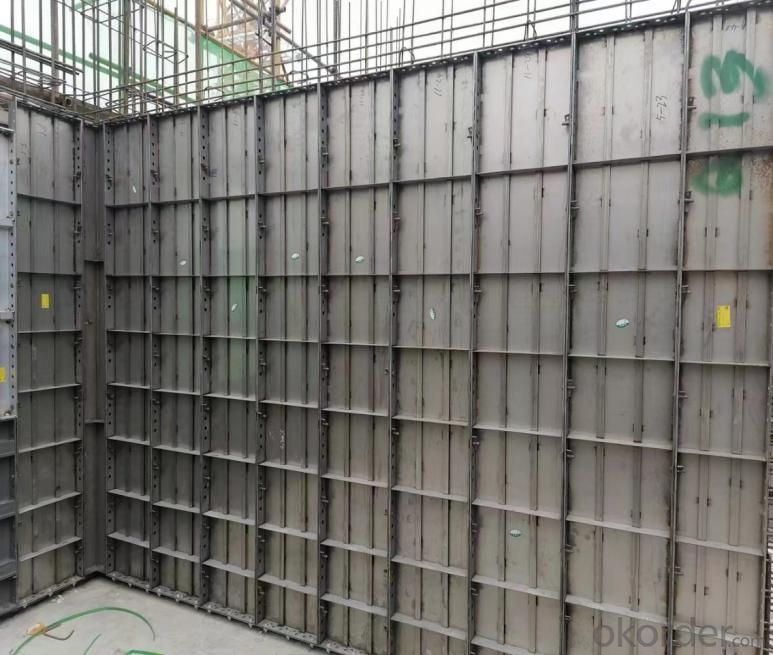
- Q: Are there any safety considerations when using steel formwork?
- When using steel formwork in construction projects, it is important to take several safety considerations into account. Firstly, the weight and size of the steel formwork panels make handling and installation physically demanding. To prevent accidents and injuries, it is crucial to have trained personnel and proper lifting equipment to safely handle and position the panels. Secondly, stability during concrete pouring is vital, so the steel formwork should be securely supported and braced. This can be achieved by implementing anchoring and shoring systems, which will prevent collapse or displacement of the formwork and reduce the risk of serious accidents. In addition, working at heights while installing or removing the steel formwork can lead to falls. To mitigate this risk, suitable fall protection measures such as guardrails, safety nets, or personal fall arrest systems should be provided to prevent workers from falling from elevated surfaces. Furthermore, steel formwork may have sharp edges or protruding parts that can cause lacerations or puncture wounds. To minimize the risk of injury, workers should be equipped with appropriate personal protective equipment (PPE) including gloves, safety boots, and eye protection. Moreover, regular inspections of the steel formwork should be conducted to identify any signs of damage or deterioration. Prompt replacement of damaged or weakened components is essential to maintain the structural integrity and safety of the formwork system. Finally, effective communication and coordination among workers are essential to prevent accidents. Clear instructions, training, and supervision will ensure that all workers understand and adhere to the safety procedures when using steel formwork. In conclusion, by considering these safety measures and implementing appropriate precautions, the risks associated with using steel formwork can be minimized. This will create a safer working environment for construction personnel.
- Q: How are steel formwork systems assembled and disassembled?
- A simple and efficient process is used to assemble and disassemble steel formwork systems. The process begins by erecting the steel panels, which interlock with each other using connecting devices like pins, wedges, or clips. These panels come in various sizes and shapes to meet different construction needs. To assemble the steel formwork system, the panels are aligned and connected based on the desired shape and dimensions of the structure. Pins or wedges are commonly used to secure the panels and prevent movement during concrete pouring. Once the panels are connected, support structures such as walers, props, and braces are installed. Walers are horizontal beams that connect the vertical panels, while props provide additional stability as adjustable vertical supports. Braces help resist lateral forces. During concrete pouring, the steel formwork system holds the wet concrete in place, giving shape and finish to the structure. After the concrete has cured and gained strength, the dismantling process begins. To disassemble the steel formwork system, the props and braces are removed first, followed by the walers. Once the support structures are taken down, the panels can be easily detached by removing the connecting devices. This can be done by pulling out pins or wedges or releasing clips. The disassembly process follows a systematic approach, starting from the top and moving downwards to ensure safety and prevent accidental collapse. It is important to follow safety guidelines and use appropriate tools to avoid damage to the formwork system or injury to workers. In conclusion, steel formwork systems are assembled by connecting panels and installing support structures, while the disassembly process involves removing support structures and disconnecting panels. This systematic approach ensures a safe and efficient construction process, allowing for the reuse of the formwork system in future projects.
- Q: How does steel formwork impact the overall construction cost?
- Steel formwork is a popular choice in the construction industry due to its durability, versatility, and reusability. When considering the impact of steel formwork on overall construction cost, several factors should be taken into account. Firstly, steel formwork offers a longer lifespan compared to traditional timber formwork, reducing the need for frequent replacements. This longevity leads to cost savings as the initial investment in steel formwork can be spread across multiple construction projects, eliminating the need for continuous purchases of new formwork materials. Additionally, steel formwork is known for its superior strength and stability. It can withstand higher concrete pressures, allowing for taller and more complex structures to be constructed. This enables builders to maximize floor space and increase the overall efficiency of a project, ultimately reducing construction time and costs. Moreover, steel formwork provides a smooth and consistent finish to concrete surfaces, resulting in less need for additional finishing work. This reduces labor costs and the time required for subsequent trades to commence their work, contributing to overall cost savings. Furthermore, steel formwork is designed to be easily assembled and disassembled, enabling faster construction processes. This efficiency translates into reduced labor costs and shorter project durations, ultimately impacting the overall construction cost. However, it is worth noting that the initial investment in steel formwork can be higher compared to other formwork materials such as timber or aluminum. Nevertheless, the long-term benefits and potential cost savings associated with steel formwork outweigh this initial expense. In conclusion, steel formwork positively impacts the overall construction cost by providing durability, reusability, and efficiency. Its longer lifespan, strength, and ease of use contribute to cost savings through reduced material replacements, shorter project durations, and minimized finishing work. Despite the higher initial investment, the numerous advantages of steel formwork make it a cost-effective choice for construction projects.
- Q: What are the common challenges faced when using steel formwork?
- Some common challenges faced when using steel formwork include its high initial cost compared to other formwork materials, its heavy weight which can make handling and transportation difficult, the need for skilled labor to install and dismantle it properly, the possibility of rust and corrosion if not properly maintained, and the limited flexibility in terms of shape and size compared to other formwork systems.
- Q: Can steel formwork be used for precast concrete balconies?
- Yes, steel formwork can be used for precast concrete balconies. Steel formwork is commonly used in construction for various applications, including precast concrete elements. It offers several advantages such as durability, strength, and flexibility. Steel formwork can be easily fabricated to the required dimensions and shapes, allowing for the creation of complex balcony designs. It also provides a smooth finish to the concrete surface, reducing the need for additional finishing work. Furthermore, steel formwork can be reused multiple times, making it a cost-effective option for precast concrete balconies.
- Q: What are the different types of formwork anchors used in steel formwork?
- There are several types of formwork anchors commonly used in steel formwork, including wedge anchors, sleeve anchors, and through-bolt anchors. Wedge anchors are inserted into pre-drilled holes in the steel formwork and are tightened with a wrench to secure the formwork in place. Sleeve anchors are similar to wedge anchors but have a sleeve that expands against the sides of the hole to provide additional stability. Through-bolt anchors consist of a threaded rod that passes through the formwork and is secured with a nut on the opposite side. These anchors offer a strong and reliable connection for steel formwork.
- Q: What are the common design considerations for steel formwork in high-rise buildings?
- Some common design considerations for steel formwork in high-rise buildings include ensuring structural stability and strength, considering load-bearing capacity, selecting appropriate materials to withstand high pressures, incorporating modular designs for easy assembly and disassembly, incorporating safety measures to prevent accidents during construction, and considering the overall cost-effectiveness and time efficiency of the formwork system.
- Q: How does steel formwork affect the overall quality of the concrete structure?
- The overall quality of a concrete structure is greatly influenced by steel formwork. Several factors contribute to this quality: 1. Precise Dimensions: Steel formwork guarantees accurate dimensions for the concrete structure. It maintains a rigid framework during pouring and curing, preventing any deformations or distortions. This precision in dimensions enhances the overall strength, stability, and durability of the structure. 2. Smooth Surface Finish: Steel formwork assists in achieving a uniform and smooth surface finish for the concrete. The smoothness of the formwork translates into a smooth concrete surface, reducing the need for additional finishing work. Not only does this improve the aesthetics, but it also enhances the durability and resistance to wear and tear. 3. Strength and Load-bearing Capacity: Steel formwork is renowned for its high strength and load-bearing capacity. This strength enables it to withstand the pressure exerted by the concrete during pouring and curing. A robust formwork ensures proper support for the concrete structure, enabling it to withstand the intended loads. This contributes to the overall integrity and safety of the building. 4. Cost-effective Reusability: Steel formwork is a cost-effective option due to its reusability. Its durability allows for multiple uses, reducing the need for frequent replacements. This not only saves money but also reduces construction waste. By employing steel formwork, contractors can achieve high-quality concrete structures without compromising on cost or environmental impact. In conclusion, steel formwork significantly impacts the overall quality of a concrete structure through its provision of precise dimensions, smooth surface finish, strength, load-bearing capacity, reusability, and cost-effectiveness. Proper utilization of steel formwork ensures compliance with required standards, enhances durability, and guarantees occupant safety.
- Q: How does steel formwork handle different concrete slump values?
- Steel formwork is highly versatile and can effectively handle different concrete slump values. The strength and rigidity of steel make it capable of withstanding the pressure exerted by concrete with higher slump values. Additionally, steel formwork can be easily adjusted or reinforced to accommodate varying concrete flowability, ensuring proper shaping and support during the pouring and curing process.
- Q: What are the advantages of using steel formwork?
- There are several advantages of using steel formwork. Firstly, steel formwork is highly durable and can withstand multiple uses, making it cost-effective in the long run. Secondly, it provides a smooth and consistent finish to the concrete structure, resulting in high-quality construction. Additionally, steel formwork is lightweight and easy to handle, which reduces labor and transportation costs. It also offers flexibility in terms of design modifications and can be easily assembled and dismantled. Lastly, steel formwork is fire-resistant and offers better safety measures compared to other formwork materials.
Send your message to us
Best qaulity of construction formwork,concrete column formwork, Stainless Steel Formwork
- Loading Port:
- Shanghai
- Payment Terms:
- TT or LC
- Min Order Qty:
- 1 set
- Supply Capability:
- 1000000 set/month
OKorder Service Pledge
OKorder Financial Service
Similar products
Hot products
Hot Searches
